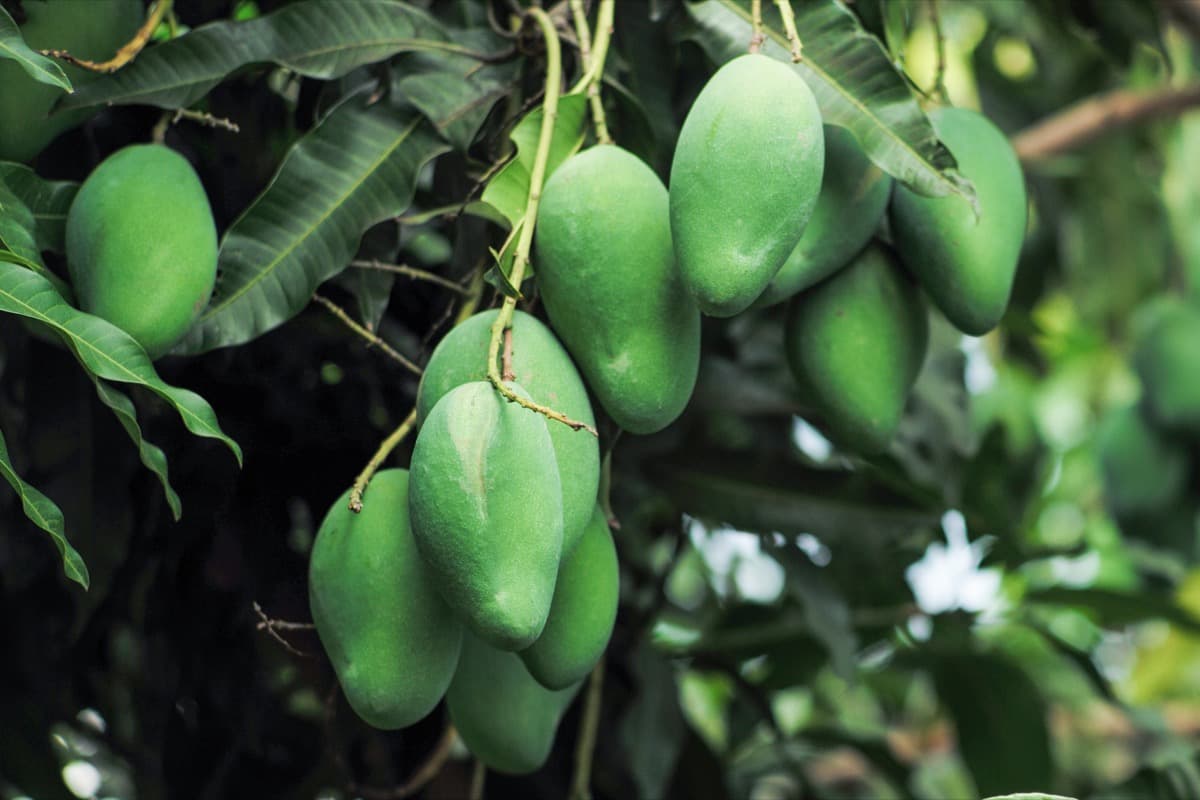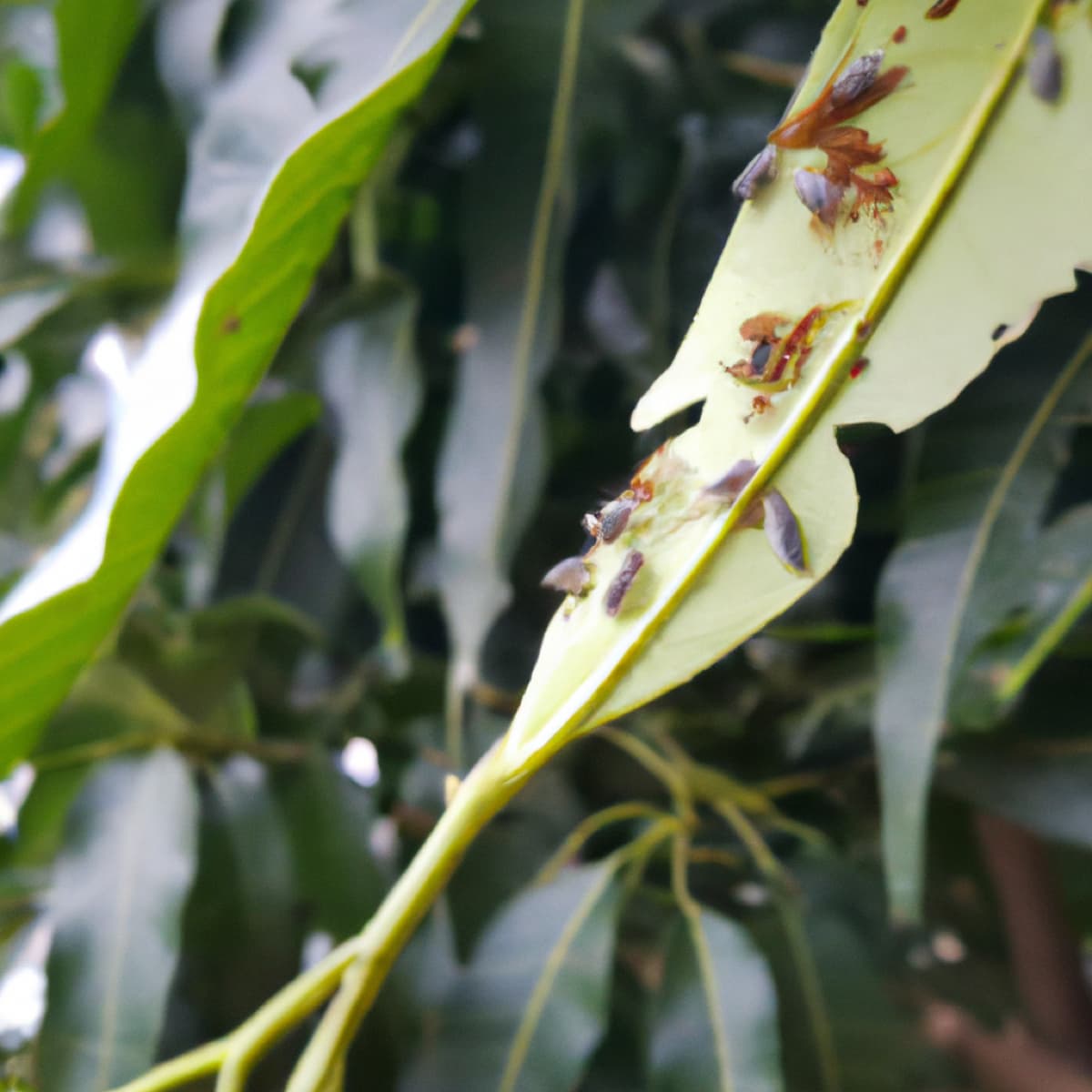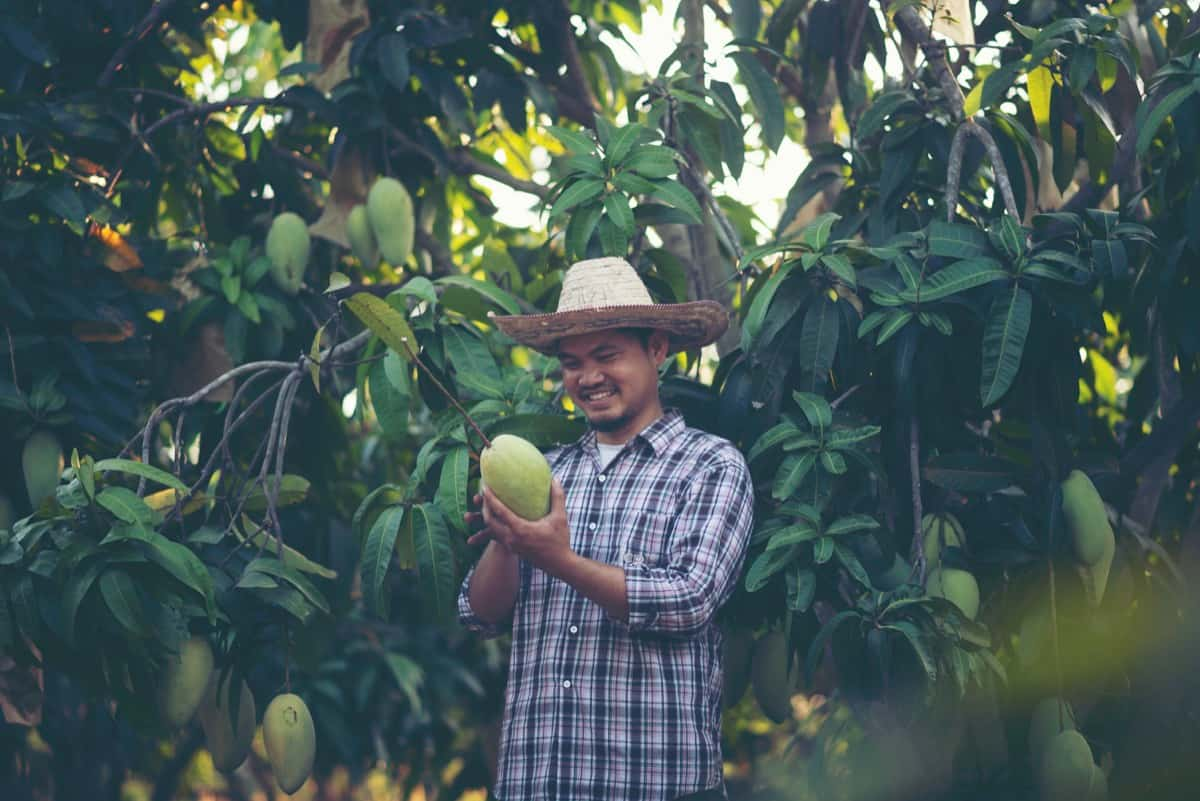The Mango Hoppers, Idioscopus niveosparus; Idioscopus clypealis; Amritodus atkinsoni; belonging to the Family Cicadellidae of the Order Hemiptera, are inflorescence and fruit feeders. This pest feeds on the mango tree’s leaves, stems, inflorescence, and fruits and can reduce the yield and quality of the crop. This pest is also known to harbor several plant viruses, which can further degrade the yields.

They can jump up to 10 cm in height, enabling them to move quickly and easily between plants. To effectively manage this pest, it is important to understand its life cycle, its preferred habitats, and the best methods for controlling it. This article will provide an overview and discussion of the Mango Hopper Pest in Mango crops, including its symptoms, identification techniques, and control.
Mango Hoppers Pest Management
Life Cycle of Mango Hoppers Pest in Mango Crop
- Egg: The female adult lays eggs in the young leaves, flowers, crevices and cracks of shoots, and unopened flowers. The nymphs hatch out of the eggs within one week.
- Nymph: The nymphs undergo five instars in two weeks and cannot fly and move rapidly like adults.
- Adult: The adults can jump by making a unique clicking sound, fly up to a short distance, and land back on the plant. The adult stage is the most destructive stage of the mango hopper. This pest is often observed in the February-March months during the flowering and fruiting stages of the plant.
Occurrence of Mango Hoppers Pest in Mango Crop
- Location of Mango Hopper pest: This pest is found to infest mango crops in India, Sri Lanka, Burma, Bangladesh, Nepal, Malaysia, Africa, Vietnam, Indonesia, Taiwan, Philippines, Australia, and the United States. In India, the pest infests the crops in the states, especially Andhra Pradesh, Kerala, Karnataka, Tamil Nadu, and Maharashtra.
- Host range: The pest primarily infests mango crops, but it can also feed on other crops such as Citrus, Guava, Papaya, Coffee, Coconut, and Banana.
Factors Favoring the Population Increase of Mango Hoppers Pest in Mango Crop
- High temperatures, heavy rainfalls, and high relative humidity can create a favorable environment for the hoppers to reproduce since they need water to breed and lay eggs.
- Inadequate or improper pruning, overcrowding of trees, inadequate or improper use of pesticides, and unsuitable or poor-quality fertilizers can create a favorable environment for the hoppers.
- Predators like spiders, beetles, and wasps can feed on the hoppers and reduce their numbers.
Identification of Mango Hoppers Pest in Mango Crop
- Eggs: They are small, white in color, and spherical in shape.
- Nymphs: They are very active, Pale yellow or light green, and have short antennae and wing pads.
- Adults: They are generally dark green or brown and have long antennae and wings.
- I. niveosparus – They have white and wavy bands on their wings and three spots on their scutellum.
- I. clypealis – They have a dark spot on the vertex and two spots on their scutellum.
- A. atkinsoni – They have only two spots on their scutellum.
Damage Symptoms of Mango Hoppers Pest in Mango Crop
- The nymphs and adults of this pest puncture and suck the sap from young and tender parts of the plant, thereby destroying the inflorescence and causing premature fruit drop.
- This leads to the drying and withering of flowers and their buds.
- They secrete honeydew which causes the sooty mould to grow on the foliage and other parts of the plant.
- In the Non-flowering season, the hoppers hide in the cracks and crevices on the plants’ bark.
- A unique clicking sound is produced when the hoppers move among the foliage.
In case you missed it: Maize Leaf Blight Disease Management in Maize: Symptoms, Treatment, Chemical, Biological, Natural, and Organic Control

Percentage of Yield Loss in Mango due to Mango Hoppers Pest
- In the United States, mango hoppers infestation can cause up to 70% yield loss in mango. In Africa, the yield losses due to the hopper pest are 50%. In Bangladesh, the losses are around 15%. In Thailand, the losses are around 20%. In the Philippines, it is 25%. In Sri Lanka, it is around 30%.
- In India, yield losses are up to 40%. In China, the yield losses can be as high as 60%. In Mexico, yield losses can reach up to 70%. The Economic Threshold Level (ETL) for the mango hopper pest is set at three to five hoppers per tree.
Cultural Control of Mango Hoppers Pest in Mango Crop
- Sanitation – Practice crop sanitation measures by keeping the field clean and weeds-free.
- Pruning – Provide proper aeration and sunlight by practicing pruning methods in the crop.
- Overuse of Fertilizers – Avoid overuse of fertilizers.
- Roguing Out – Identify and remove any infested trees or plants to prevent the spread of the pest.
- Trap Crops – Plant trap crops like sweet potatoes to attract insects away from mango trees.
Biological Control of Mango Hoppers Pest in Mango Crop
- Natural predators such as Ladybugs, Lacewings, and beneficial nematodes such as Steinernema feltiae can be used to infect and kill the pests.
- Parasites, such as the Trichogramma spp., feed on the pest’s eggs.
- The fungus Beauveria bassiana is a pathogen that can be used to control the hopper pest population.
Chemical Control of Mango Hoppers Pest in Mango Crop
- Commonly used insecticides include organophosphates, pyrethroids, and neonicotinoids. The insecticides should be applied as soon as the first hoppers are noticed and repeated every 2-3 weeks to ensure effective control.
- Apply the first spray of an insecticide like Dimethoate or Acephate or Phosalone or Monocrotophos or Methyl demeton or Malathion or Imidacloprid during panicle emergence and once again two weeks after the first spray.
- Apply Carbaryl and Wettable Sulphur to prevent the revival of the mite population.
- Mix Sulphur and Toxaphene in equal amounts and apply them to the crop for effective pest management.
- Mix 5ml of Neem Oil in 1 Litre of water and add any insecticide to prevent pest incidence.
- Spray 3% of Neem Oil or 5% of Neem Seed Kernel Powder Extract to reduce pest populations.
Preventive Measures for Control of Mango Hoppers Pest in Mango Crop
- Avoid high-density or close crop planting, as the pest will increase its population in overcrowded plantations.
- Intercropping can help reduce the population of mango hoppers by providing alternate food sources for them.
- Regular crop monitoring should be done to detect mango hoppers in the early stages.
- Proper fertilization, irrigation, and mulching can help create an unfavorable environment for the pest.
In case you missed it: Maize Web Worm Pest Management: Symptoms, Treatment, Chemical, Biological, Natural, and Organic Control

Conclusion
The mango hopper pest is a major problem for mango crops, causing significant economic losses. However, farmers can effectively manage the pest and minimize crop losses with integrated pest management strategies, such as intercropping and biological control agents. In addition, good agricultural practices, such as proper pruning, fertilization, and irrigation, can help reduce the impact of the pest.
- Deworming Schedule for Dogs/Puppies: A Beginners Guide
- How to Prevent and Control Parasites in Goats
- Beneficial Insects in Pest Management
- Natural Solutions for Pest Control in Flower Gardens
- Types of Fungicides Used in Agriculture
- Common Issues in the Fruit Development Stage of Pomegranate Farming
- Fruit Development Issues in Papaya: Easy Solutions and Treatment
- Soil-Borne Diseases and How to Protect Your Plants
- Practices to Prevent Disease Spread in the Garden